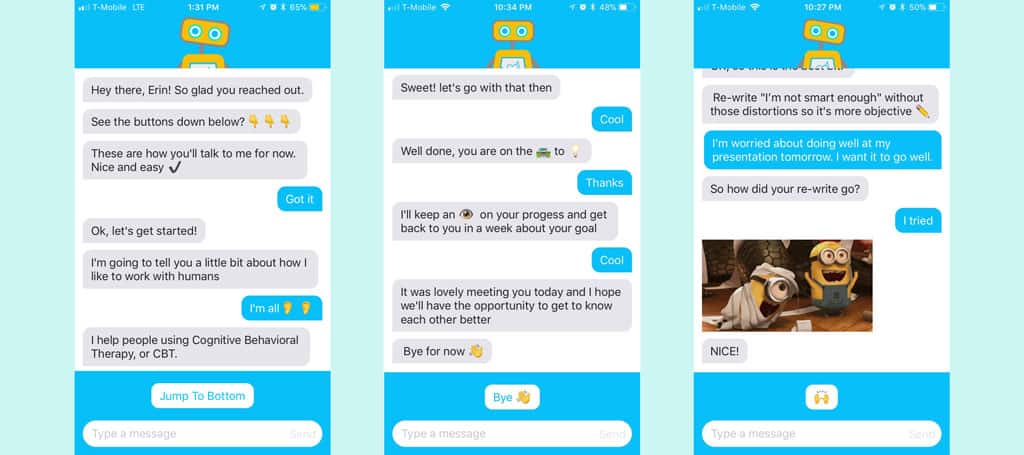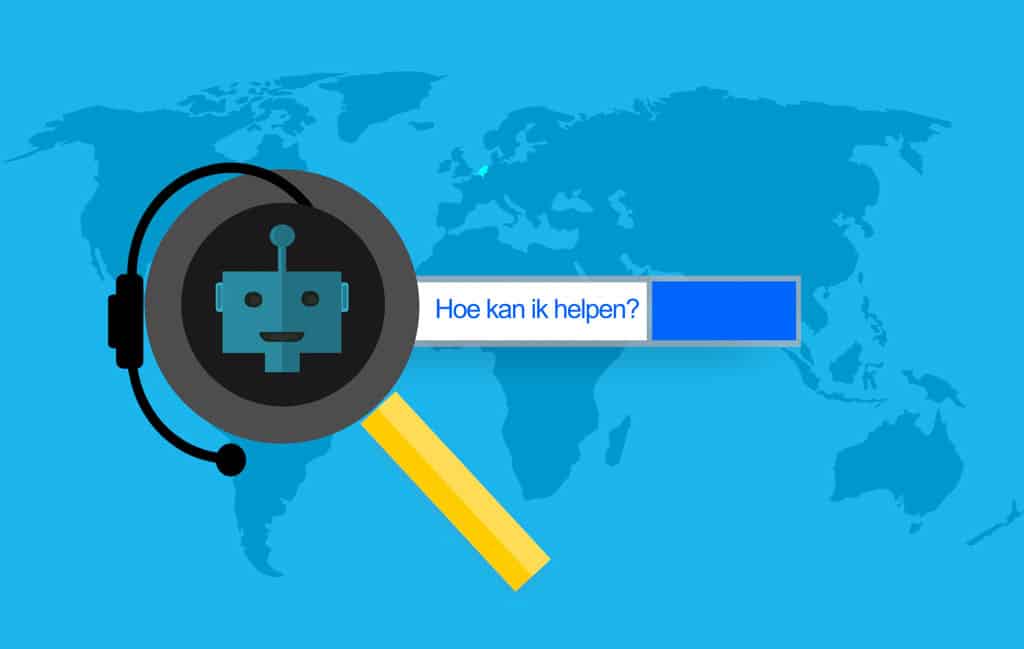Think about the last interaction you had with a company. Was it with a live agent? Was it a chatbot? Perhaps it was a human-AI hybrid that you weren’t even aware of.
Artificial Intelligence is becoming more skilled in what was, at one point, the exclusively human art of language, be it analysing sentiment, recognising voice patterns or facilitating translation.
The field of AI in customer service can be complex, but we’re conversely on quite a straightforward, linear path to its global implementation.
Still sceptical? You’re not alone. Just 27% of consumers think that AI is capable of delivering the same standard of customer service as humans (Zoominfo). An inherent fear of the future often distorts our perception of AI’s potential in fields like customer service, but to what degree is that justified?
Trepidation surrounding the singularity aside for one second; let’s focus on the here, the now and the potential of AI in customer service.
The 3 Main Types of AI in Customer Service
At one point, customer service AI was stuck in a reactionary stage. Give a bot a basic, explicit command and maybe it would understand your request and provide you with a simple solution.
Nowadays, that’s not the case. AI is far more capable of recognition and analysis than it ever has been. Its new skills have expanded its potential most notably in the following areas:
1. Chatbots
Being by far the biggest use case for AI in customer service, chatbots have advanced quickly in these customer-centric times.
As a time-and-money saving tool, their appeal is becoming ever more clear. The use of chatbots in a company has proven not only to improve the quality and speed of customer service, but also to increase job satisfaction and employee retention rates of the human agents they replace.
Quite remarkably, 39% of customer service interactions in 2020 were through chatbots. By 2024, they’ll have saved a collective 2.5 billion hours of customer time (Comm100 + Outgrow).
Unlike in the recent past, chatbots aren’t just here to solve problems. They can now take a customer through their entire buying journey with automated answers to queries and prompts linked to preference algorithms.
Check out this great example by Woebot, an automated chat service that helps people talk through their anxiety and depression:
A chat with Woebot. Image courtesy of Business Insider
Woebot regularly checks in with people who sign up to its service. Its nuanced, sympathetic responses have been proven to reduce stress and have earned the chatbot a 4.7 rating out of 10,000 reviews on Google Play.
2. Sentiment Analysis
More and more, customer service AI is being used to analyse our emotions during interactions. In doing so, companies can hope to become aware of the following:
- When a customer is having a positive or negative experience.
- When a marketing tone of voice is striking the right (or wrong) chords.
- When there is a PR crisis unfolding across social media.
With a formidable degree of accuracy, AI is able to categorise customer sentiment across chat, social media, email and wherever else customers might contact your business. It analyses the words between the lines and bases its responses on tonal prompts or written inflections from the commenter.
In the fields of translation, its use is unmatched. Multilingual Sentiment Analysis (MSA) can analyse sentiment in foreign languages that employees may not be able to understand. It can create vast databases of meaning and help businesses communicate better in their own multilingual supply chains.
One piece of kit that does this with cross-boundary understanding and efficiency is Kumul.
a live example of a voice note translated from Spanish into English with a positive sentiment using Kumul
Kumul uses advanced MSA to analyse text sent in different languages from a company’s overseas staff and partners. Anyone in the supply chain can record their voice or send a text message; Kumul will translate it for you and will help send back your translated response.
Open the door to communication through AI. Request a demo from Kumul today to remove the friction in your multinational funnel.
3. Agent Assistance
A business working in a complex or sensitive field might not be ready for AI to take on the role of direct customer support. Fortunately, there’s a hybrid option.
In this model, a human CS agent continues to run things in pole position, while AI provides more of a co-pilot service in finding and feeding information to the experienced agent in front.
It can dig through and extract info from knowledge bases in a rapid manner, not only relating to the specified problem, but also relating to the customer’s own data, which the agent can use to fully assess the issue.
As well as that, it can filter and tag incoming messages, prioritise urgent requests, and pick out flaws in your agent-scheduling system.
The Dutch telecommunications company KPN uses this kind of AI with a deftness that saw its net promoter score jump by 17 points, compared to its previously human-operated CS.
KPN’s bots are the first line of defence in the company’s CS strategy. They use speech recognition software to identify a customer, then if the request is too complex to solve themselves, they will pass the call onto an agent, along with a comprehensive history of the caller and their request.
Benefits of AI in Customer Service
While experience and necessity vary a lot from sector to sector, these 4 benefits of customer service AI pretty much cover the scope of the technology.
- It’s faster – With the ability to pull anything from a database of answers, customer service AI can offer lightning-quick responses to simple queries, as well as assist human operators to locate hints for more complex queries much faster.
- It’s predictive – If you thought it didn’t get faster than instantaneous responses to questions, consider that AI is increasingly becoming able to predict a customer’s concern before they know it themselves. Based on the page they’re on, time spent on that page, and their scrolling patterns, a chatbot can reach out to them before they even make the inquiry.
- It encourages sharing – The fact that AI is not yet completely nuanced in the art of human emotion is a blessing to customers embarrassed by a personal problem, or one they consider menial. Customers can be more comfortable sharing information with a faceless robot than a human, increasing the chance that they will remain a customer. It’s the reason that healthcare is seen as the sector with the most potential for this kind of AI.
- It’s more present – AI doesn’t need sleep. It also doesn’t need toilet breaks and there’s very rarely a family emergency to attend to. Chatbots are always there, 24/7, and are the simple solution to timezone headaches that CS managers experience when rostering live chat agents.
Image courtesy of Fingent.
The fifth benefit of AI in customer service is both its strongest pull and its biggest contributor to our future fears.
By taking on menial tasks, AI doesn’t displace employees, it simply moves them to roles of greater significance. Customer service AI is putting brains where they are needed, which, as companies are gradually getting to grips with, is a world away from the torrent of low-risk support tickets, and more in contemplating and enacting changes in the business’ operation.
Cons of AI in Customer Service
Of course, jumping ship from a human-led to an AI-led customer service strategy is no easy task. Here are some of the cons you might experience in moulding your CS around AI.
- The cost of maintenance – Both in terms of money and man-hours, setting up AI can be especially draining. Programming the bots to understand their tasks, then maintaining them to ensure they don’t stray from what they’ve learnt, can be expensive and require specialist assistance.
- Capped abilities – As bright as the future is for customer service AI, its current level is far from what we’ve seen in the realms of sci-fi. At present, bots can really only perform menial tasks. Though this is good for freeing up service agents, you will likely still need human employees to deal with anything remotely complicated.
- Speculative acceptance research – You can find, in a lot of places discussing AI in customer service online, positive, negative and nonchalant attitudes of customers to AI. While chatbot success stories are rife, so are studies that show customers are, at present, nonplussed with the great unknown of AI.
The Future of AI in Customer Service
Regardless of what you or your customers may think about AI in customer service, there’s more than an air of inevitability about where it’s headed.
40% of businesses say that customer experience is their top motivator for using artificial intelligence (Semrush). Unsuprising, really, given the way in recent times that the business world has rotated to face the customer, but still a poignant reminder that we’re seeing an exponential quickening of artificial intelligence into such customer-facing roles.
- Chatbots will continue to evolve, making for smoother and more efficient interactions with customers.
- Sentiment Analysis will become even more finely tuned to the parts of human language hidden in perception, leading to businesses’ better communication internally as well as externally.
- Agent Assistance will rapidly become the norm. It will speed up and improve the efficiency of human-to-human interaction across every sector.





